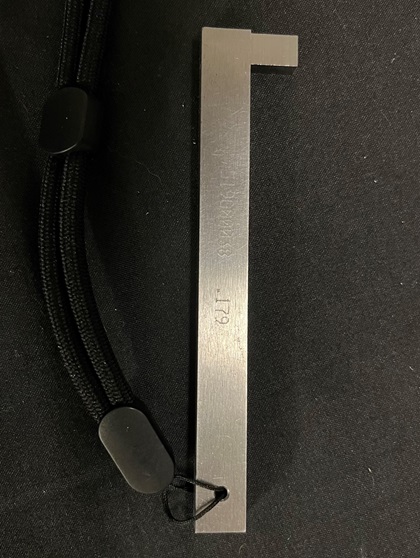Aircraft Maintenance: Managing airworthiness directives
Chances are, you’ve heard about the recent airworthiness directive (AD) affecting approximately 2,000 Continental Aerospace Technologies engines and crankshafts.

According to the associated Mandatory Service Bulletin (MSB23-01A), Continental discovered a potential assembly error whereby one or more counterweight retaining rings were not properly seated in the crankshaft counterweight groove. This condition could allow the counterweight to depart from the crankshaft during engine operation, resulting in catastrophic engine damage.
To the company’s credit, Continental took action rapidly after the situation was discovered, has been very forthright with its communications, and is offering generous warranty terms for the work required to comply with the AD. The company even shipped out critical tools required to do the work within days of the AD publication. Although this AD is a significant inconvenience to affected owners, I am not aware of any injuries associated with the issue, and the cost of compliance is covered by Continental.
Unfortunately, this is not the typical case with ADs. Most ADs in general aviation result in the owner bearing the burden of compliance, which can be extraordinarily expensive. As an owner, you cannot control the existence of ADs that apply to your aircraft. However, there are things that you can do to mitigate the impact and cost of an AD when it comes your way. It all starts with awareness.
Awareness
Scheduling
Scheduling is one of the best ways you can help yourself manage the cost of AD compliance. When an AD comes out, there is usually a mad dash for the maintenance resources to meet the AD requirements. At the SB stage, there may still be time to schedule inspections or procure parts before schedules get booked up and shortages affect parts availability. Additionally, time gives you the opportunity to get together with other owners to schedule joint maintenance or purchase parts in bulk. This has been especially true of the Piper Aircraft wing spar AD, which requires special equipment to do eddy current inspection of the spar bolt holes. Getting a technician with the required equipment out to inspect four aircraft on the same day is much more cost-effective than trying to book an inspection for a single aircraft.
Documentation
FAA Advisory Circular AC 39-7D addresses the documentation for airworthiness directives, including the following:
Required Entries into Records. The person accomplishing the AD is required by § 43.9 to record AD compliance. The entry must include those items specified in § 43.9(a)(1) through (a)(4). The owner or operator is required by § 91.405 to ensure that maintenance personnel make appropriate entries and, by § 91.417, to maintain those records. Owners and operators should note that there is a difference between the records required to be kept by the owner under § 91.417 and those that § 43.9 requires maintenance personnel to make. In either case, the owner or operator is responsible for maintaining proper records.

This single section of the guidance places the bottom-line responsibility for maintaining records for AD compliance on the owner or operator of the aircraft. If you do not have a succinct and easy-to-read log demonstrating compliance with all ADs on your aircraft, you are doing yourself a disservice that may cost you during your next annual inspection or other maintenance event.
That said, the most important thing you can do to aid yourself in compliance with future ADs is to ensure that your maintenance documentation and logbooks include details that are often overlooked in normal maintenance practices. Specifically, any time that a part is replaced or repaired, the part number, serial number, and work order information should be noted. Personally, I keep a spreadsheet with the installation date, hours, part number, and serial number of every component in the aircraft that I lay my hands on. It’s an ever-growing list. Each time that I work on the aircraft, I’m thinking, “Is this a part that I’ve documented?”
Photos can be powerful tools as well. Any time that the aircraft or engine is opened up for maintenance, take the opportunity to photograph as much as possible, including data plates. Not only will this help you evaluate the impact of potential ADs by using photographic evidence, it can help estimate the cost of a job if you can show your mechanic exactly what’s inside that wing, tail cone, panel, engine compartment, etc.
That’s not a light at the end of the tunnel…it’s a train
Considering the massive supply chain and labor shortages that the industry has faced over the past three years, I suspect we are only beginning to see the fallout in terms of ADs. Even with the extraordinary controls and documentation required for FAA-certified products, it seems inevitable that there will be quality escapes, training issues, counterfeit parts, and other issues. Time will tell, but I believe that now is the time to get ahead of the curve and be prepared.
I’ve spent time at many aviation manufacturers, and I know that they do everything in their power to maintain 100 percent quality in their products. They have my sympathy for fighting that battle now, at a time when turnover rates in suppliers and staff are at unimaginable levels. So, in spite of the crisis facing all those engine owners, I’m grateful that Continental has stepped up to the plate with its warranty coverage and the immediate delivery of the tools to do the job. All of us—owners and manufacturers—are ultimately in this together. The more that we applaud the ones who “do the right thing,” the more likely other companies will do the same in the future. Until next time, I hope you and your families remain safe and healthy, and I wish you blue skies.


